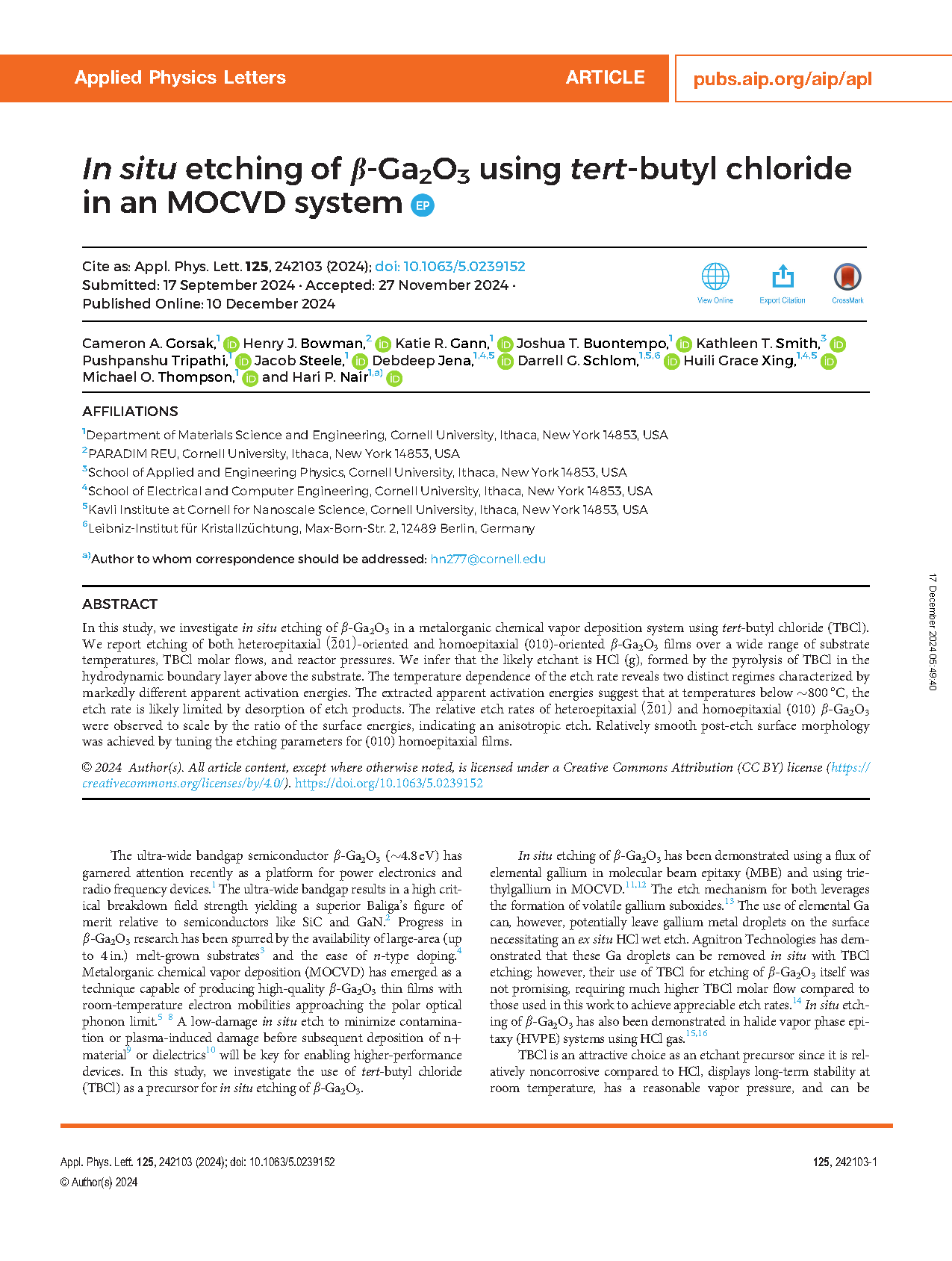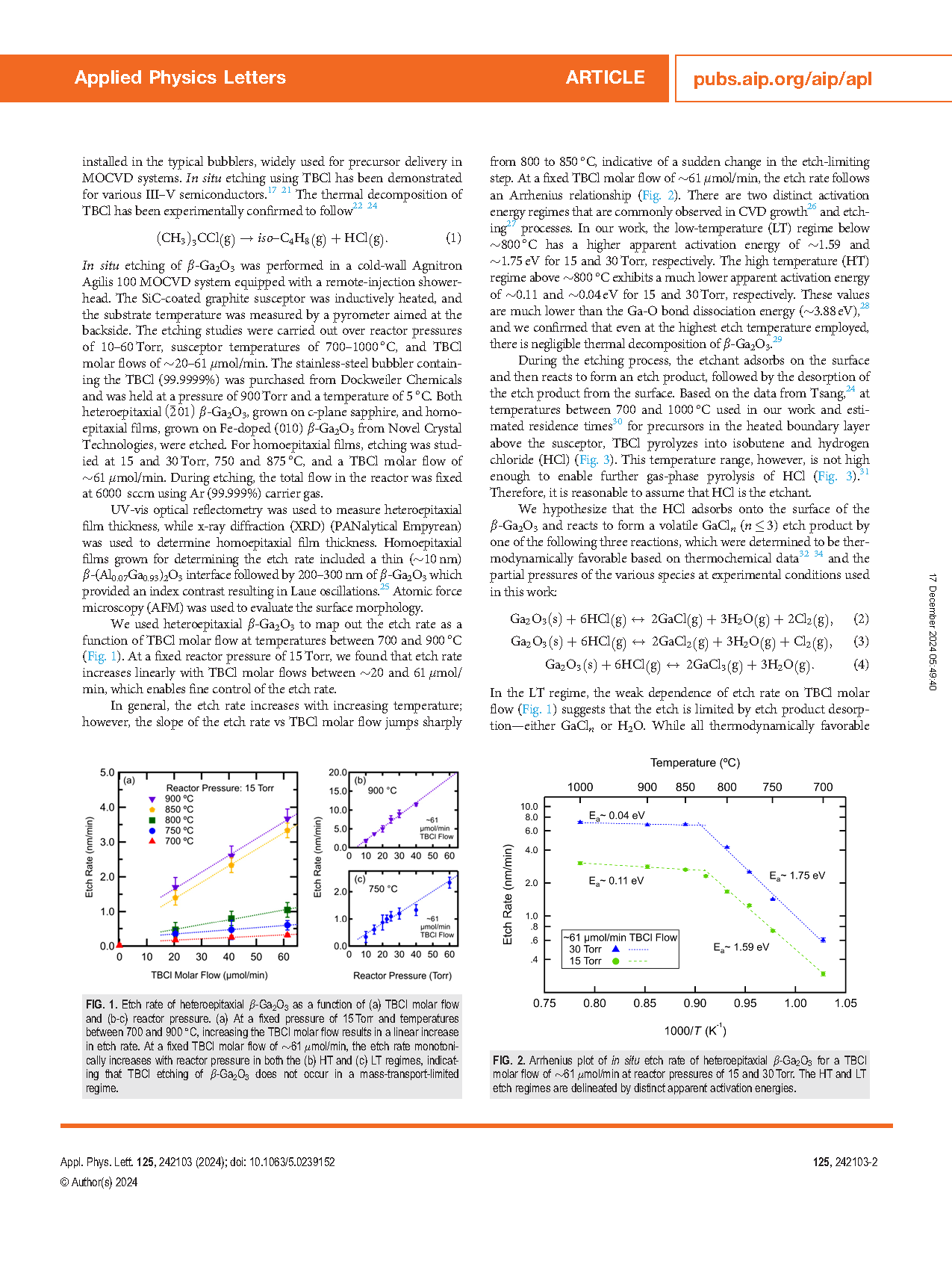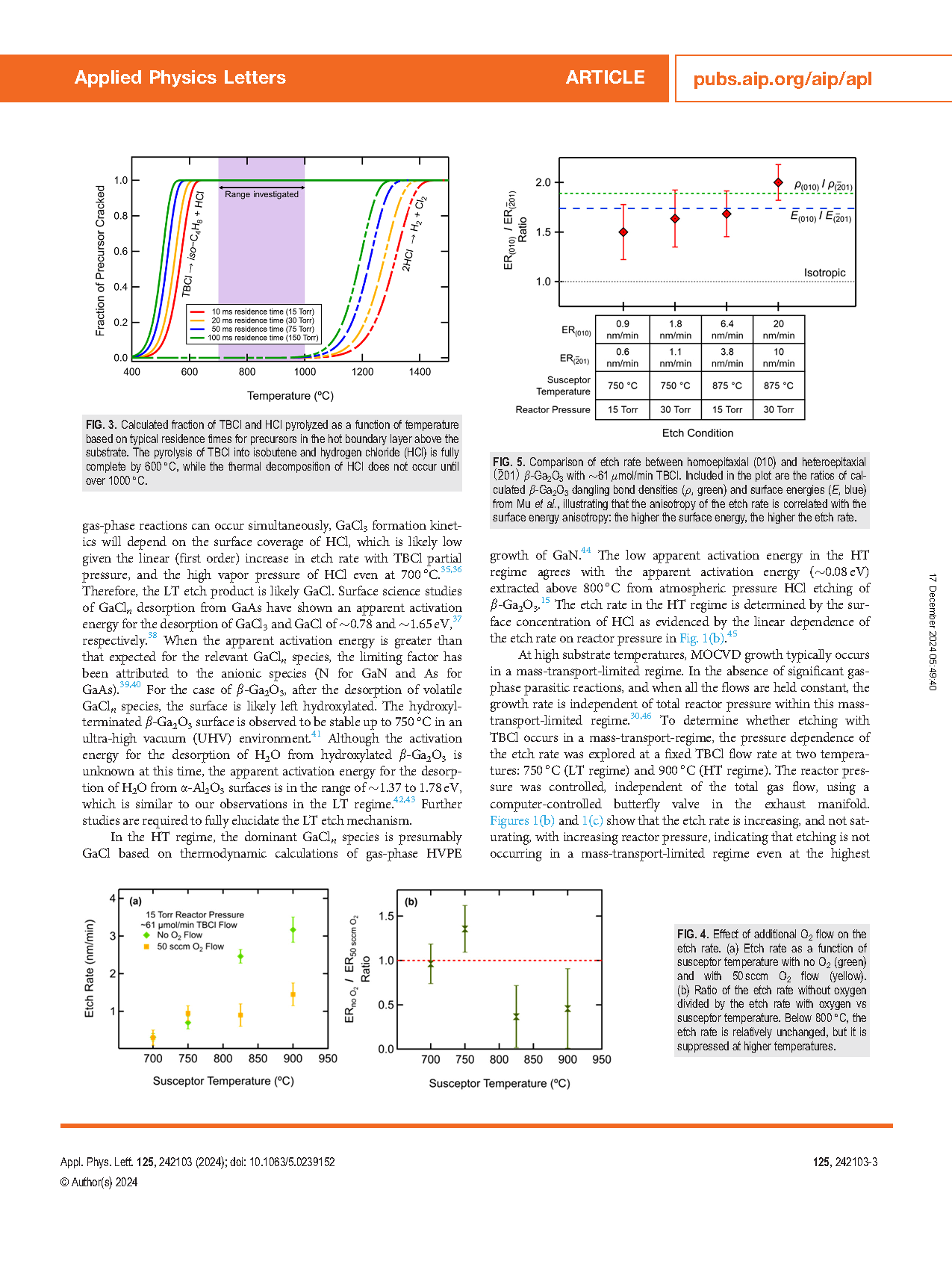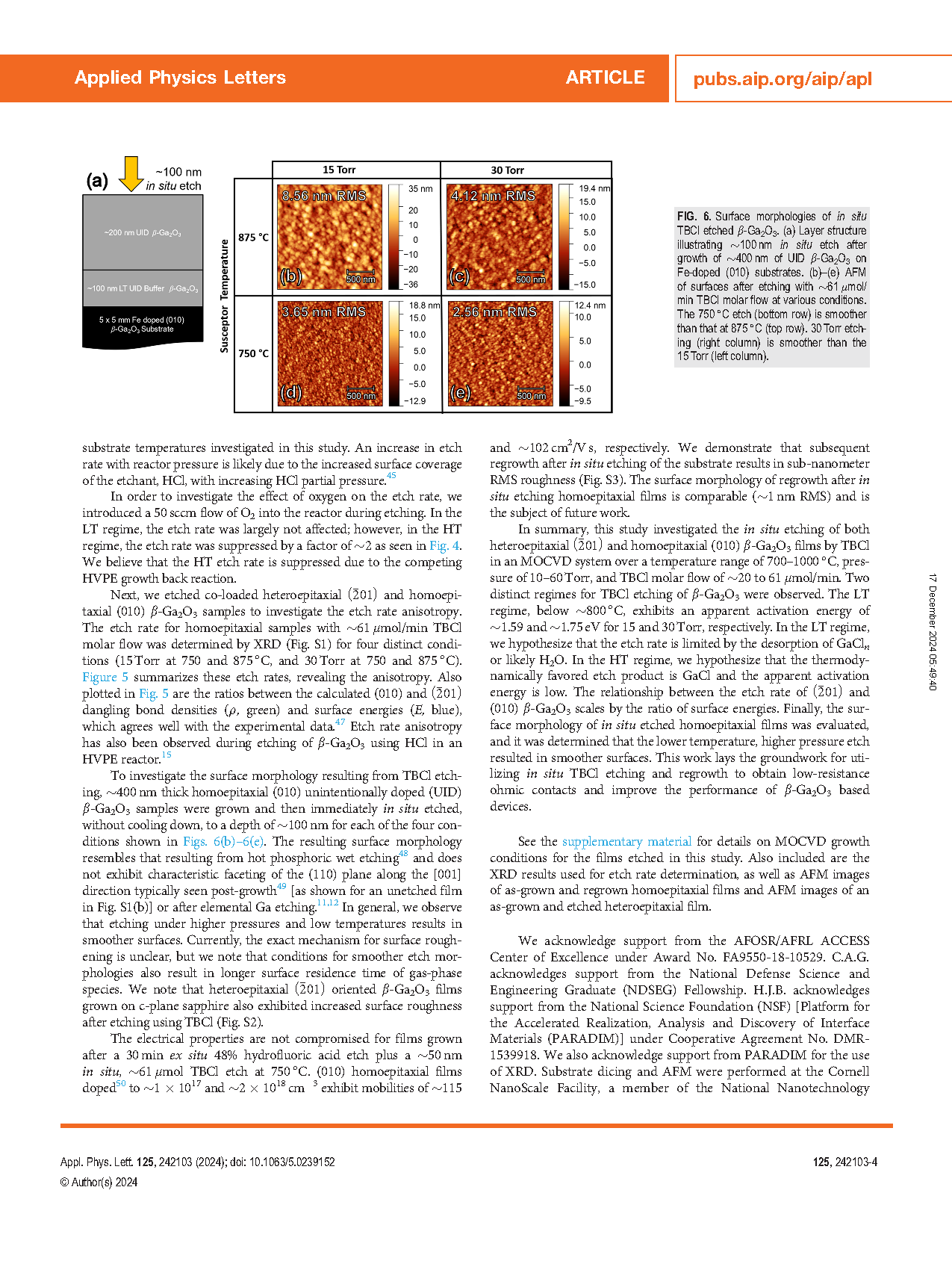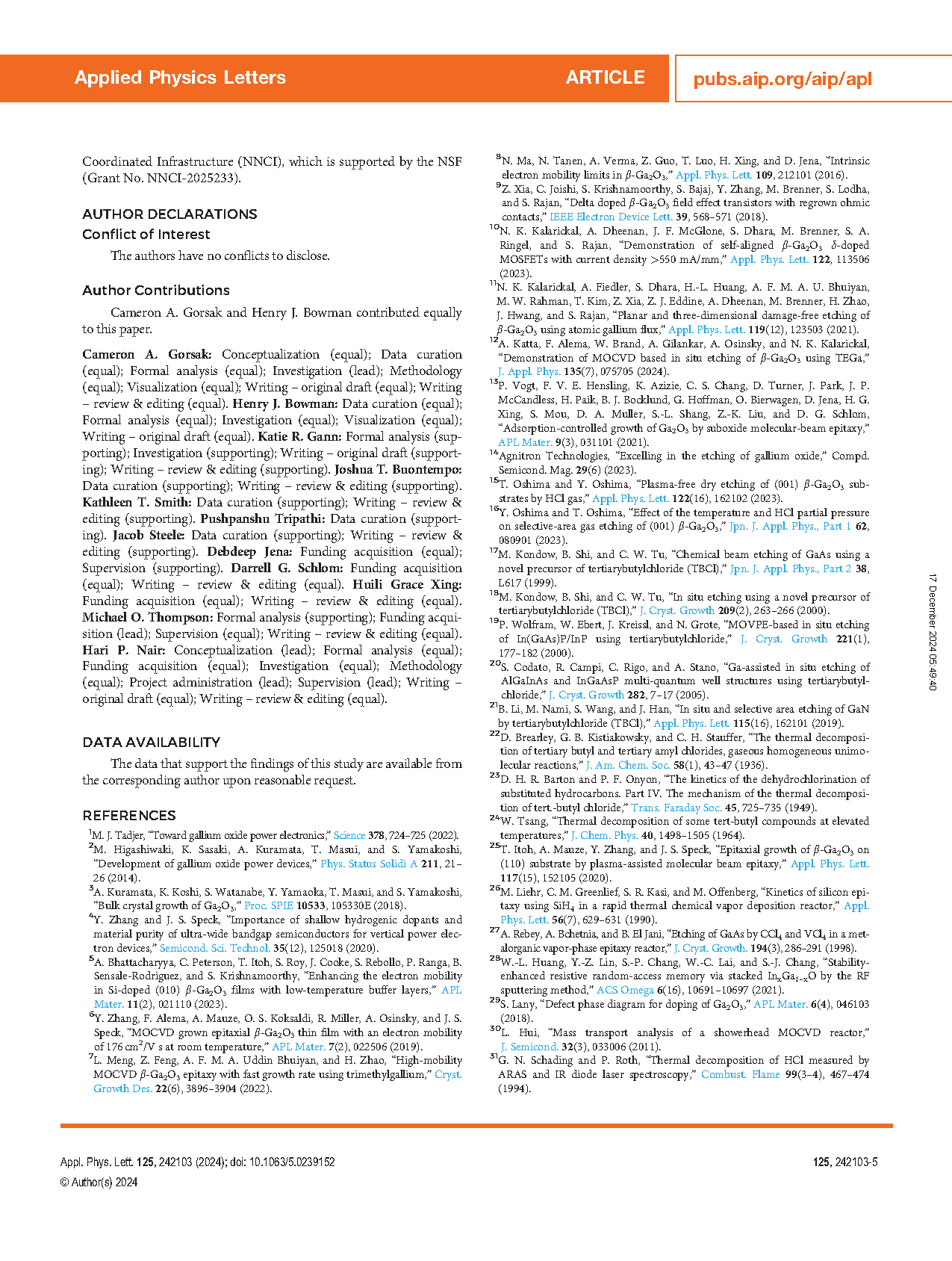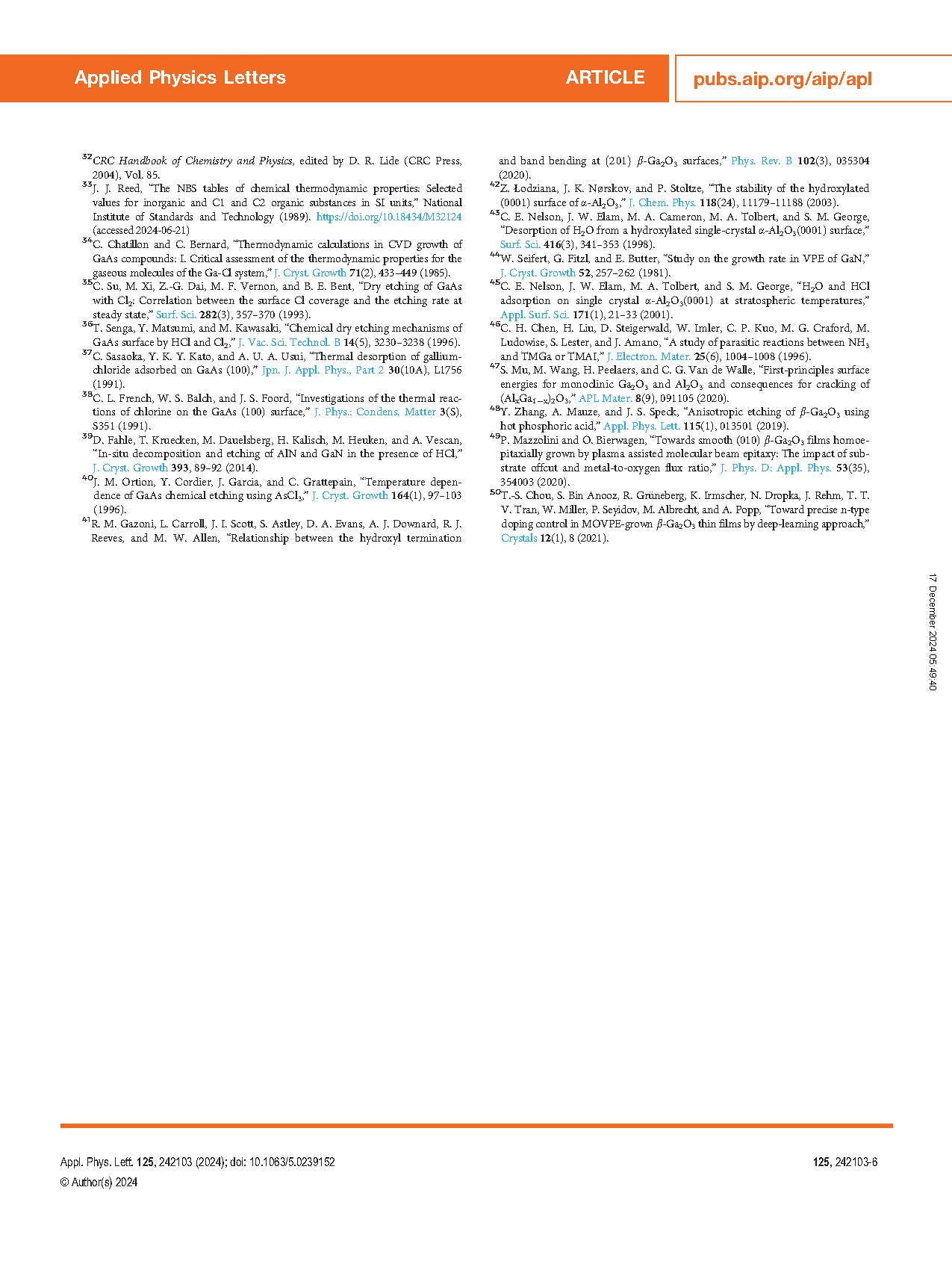
【International Papers】Editor's Picks丨In situ etching of β-Ga₂O₃ using tert-butyl chloride in an MOCVD system
日期:2025-02-11阅读:423
Researchers from the Cornell University have published a dissertation titled "In situ etching of β-Ga2O3 using tert-butyl chloride in an MOCVD system" in Applied Physics Letters.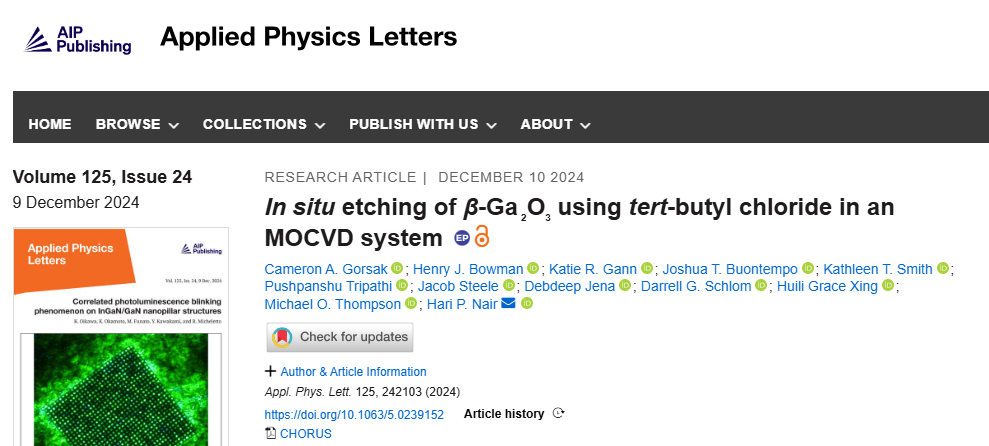
Corresponding Author Introduction

Hari Nair
Hari Nair is a Research Assistant Professor in the Department of Materials Science and Engineering at Cornell University. Previously, he was a Research Associate with Prof. Darrell Schlom at Cornell University, where he worked on the growth of ruthenate Ruddlesden-Popper thin films using molecular beam epitaxy. This work has lead to the first demonstration of superconducting Sr2RuO4 thin films in the United States. Hari received his Ph.D. in Electrical and Computer Engineering from The University of Texas at Austin in 2013. His Ph.D. work involved molecular beam epitaxy growth of GaSb-based semiconductor alloys to extend the emission wavelength of type-I diode lasers into the 3-5 μm range. This work resulted in the longest wavelength GaSb-based type-I diode laser with an aluminum free active region at room temperature. Hari received his B.Tech. in Engineering Physics from Indian Institute of Technology Madras in 2006.
Research Interests
Novel materials have the potential of precipitating revolutionary rather than evolutionary changes in wide ranging fields. My vision is to explore the properties of novel oxide materials in epitaxial thin film form for wide ranging applications from power electronics to optical metamaterials. Understanding and tuning the fundamental properties of these versatile oxides using a combination of epitaxial strain, dimensionality and heterostructures will be key to developing the next generation of electronic and optoelectronic devices.
Abstract
In this study, we investigate in situ etching of β-Ga2O3 in a metalorganic chemical vapor deposition system using tert-butyl chloride (TBCl). We report etching of both heteroepitaxial (-201)-oriented and homoepitaxial (010)-oriented β-Ga2O3 films over a wide range of substrate temperatures, TBCl molar flows, and reactor pressures. We infer that the likely etchant is HCl (g), formed by the pyrolysis of TBCl in the hydrodynamic boundary layer above the substrate. The temperature dependence of the etch rate reveals two distinct regimes characterized by markedly different apparent activation energies. The extracted apparent activation energies suggest that at temperatures below ∼800 °C, the etch rate is likely limited by desorption of etch products. The relative etch rates of heteroepitaxial (-201) and homoepitaxial (010) β-Ga2O3 were observed to scale by the ratio of the surface energies, indicating an anisotropic etch. Relatively smooth post-etch surface morphology was achieved by tuning the etching parameters for (010) homoepitaxial films.
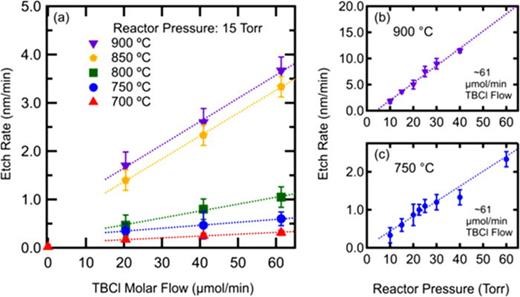
FIG. 1. Etch rate of heteroepitaxial β-Ga2O3 as a function of (a) TBCl molar flow and (b-c) reactor pressure. (a) At a fixed pressure of 15 Torr and temperatures between 700 and 900 °C, increasing the TBCl molar flow results in a linear increase in etch rate. At a fixed TBCl molar flow of ∼61 μmol/min, the etch rate monotonically increases with reactor pressure in both the (b) HT and (c) LT regimes, indicating that TBCl etching of β-Ga2O3 does not occur in a mass-transport-limited regime.
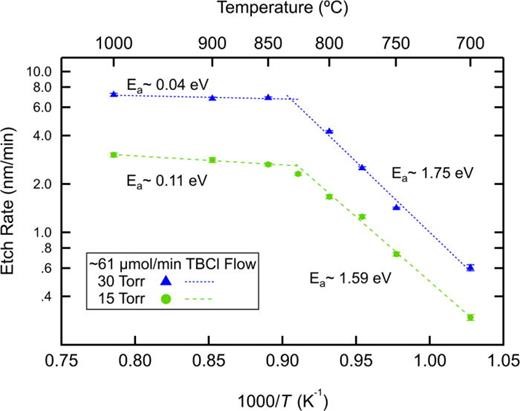
FIG. 2. Arrhenius plot of in situ etch rate of heteroepitaxial β-Ga2O3 for a TBCl molar flow of ∼61 μmol/min at reactor pressures of 15 and 30 Torr. The HT and LT etch regimes are delineated by distinct apparent activation energies.
DOI:
doi.org/10.1063/5.0239152
